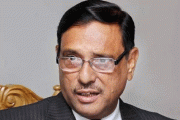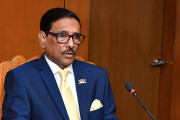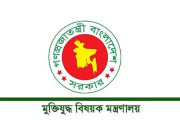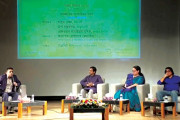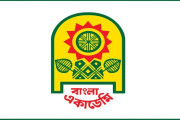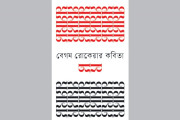In the digital era traffickers have changed their strategies to trap their prey. Before the era of digitization they used to run human trading through travel agencies but these days they have the wide excess to their targeted population with the blessing of virtual media and many more modern technologies.
।। Alaul Alam।।
Human trafficking has been exposed as a constant threat in the modern world. Especially, the developing countries are bearing the brunt of it. Evidently, human trafficking has the existence not merely in the modern era, this curse has evolved through the ages in the human history. It is a great offense against humanity. Amid all human trafficking crimes trafficking menace against women is the worst.
Global data report that every year an estimated 800,000 women and children are trafficked across international borders and 80 per cent of them face the brunt of becoming forced prostitution. Different sources estimate that over the last 10 years around 200,000 Bangladeshi women were trafficked to various countries in the world.
Another media source reveals that around 20,000 Bangladeshi women are trafficked to India, Pakistan and Middle Eastern states every year. In the Asian and African countries women trafficking problem is increasing alarmingly. Amid the Covid-19 the menace of women trafficking has deepened drastically. According to the UN Office on Drugs and Crime (UNODC), economic fallout and job losses due to the Covid-19 have exposed many to be trafficked.
In the digital era traffickers have changed their strategies to trap their prey. Before the era of digitization they used to run human trading through travel agencies but these days they have the wide excess to their targeted population with the blessing of virtual media and many more modern technologies.
It is apparent that the traffickers are seeing more scopes to trap a huge number of people to accomplish their trafficking crime. They maintain international syndicate of trafficking. In every country where there is a fertile ground for human trafficking, they have their representatives who work to manage the targeted people and traffic them following the instruction of the ring leaders.
Recently, Rapid Action Battalion (RAB) arrested three members of a human trafficking syndicate in Dhaka and they have found the evidence that this syndicate trafficked around 200 women to India in the last 10 years. They sold the women to the brothels in India with each one for Tk 1 to 1.5 lakh.
In recent times the law enforcers have made many drives across the country to arrest the traffickers. A few months back, with the arrest of a trafficking syndicate who used to traffic women using social media app TikTok the law enforcers have found many clues that help them to run the drives against the traffickers. But it is obvious that many more crimes related to women trafficking are still unaddressed.
In most cases when some victims manage themselves to flee from the deported countries or are rescued by the law enforcers, this issue turns a matter of concern but in some days it sinks behind other issues. Certainly, worries may shift to another issue but the mischiefs of the traffickers go unabated.
Sources say that these days the traffickers are using social platforms and getting acquainted with many girls and women by luring them to change their lots with good jobs and better salaries. In all cases, they ask the victims to keep the matter secret. It is evident that when they manage beautiful women and girls, they bear all the expenses regarding preparing passport and visa and take them to the deported countries where instead of giving jobs they force the victims to involve in sex trade.
It is obvious that the global initiatives are ongoing to combat women trafficking. Different national and international organizations are working to combat women trafficking. But how far we see the solution of one of the most burning problems these days? In most cases the opposite scenario is prevailing in many countries as this heinous crime is increasing. But despite recognizing trafficking as the burning problem why are they unable to stop it?
The causes may be many for the women being trafficked. Most of the victims fall prey to the traffickers in a bid to escape their poverty trap. Unequal economy, gender-based discrimination on social protection and lack of information among the public about trafficking are some of the causes. Girls and women working in garments and other informal sectors are exposed highly to be trafficked. A recent study has revealed that women living in the slums are highly risked for trafficking.
Also, the husband-deserted young women are easily being trapped by the traffickers with a hope to become self-reliant. Early marriage and divorcing of women are also the causes of their being trafficked. Women living in poverty are more vulnerable and may have the higher probability to be lured by the traffickers.
Trafficking is a violation of human rights. It has far-reaching consequences on individual, family, community and country. The victims undergo physical and mental disorder. Not only are the victims, their families are stigmatized and in many cases the victims cannot back to the normal life as they have hardly access to mainstream society. Many victims find only two alternative options open for them either to commit suicide or to detach themselves from the mainstream society.
It is obvious that more often media sources expose that law enforcing agencies have rescued some women when they were being trafficked or the victims may be rescued from brothels if the fortune favors on them. As the fortunes of the most are not favored, they compel survival as sex workers. Now the question is; in all regards, how far they have the chance to be rehabilitated?
Undeniably, some national and international volunteer organizations work for the rehabilitation of the trafficked girls and women. But in many cases, their rehabilitation centers round supporting them foods and shelters. When they come out of the rehabilitation centers they may have the chance to be trafficked again. Actually, they need to have the attachment in the mainstream society along with the path of income generation.
To prevent trafficking and punish the criminals, the government enacted the Prevention and Suppression of Human Trafficking Act in 2012. The rules of this act were also formulated later, in 2017. But how far it has been introduced is also a question now? In many cases, the traffickers come out of jail easily and start the same crime again. Until they are given the exemplary punishment by introducing the stricter law, it is tough to check this crime.
However, the government has promulgated various policies and regulations to ensure equal rights for women in all spheres of life. Along with this, different locals and national NGOs are working to empower women. Despite the ongoing initiatives the priorities should be given to make more scopes for the women particularly, those from poor family background as they are more prone to be trapped by the traffickers.
Evidently, in many cases women are not aware of their rights and privileges provided by the government. Law enforcers should be alert but there is hardly any alternative to making awareness amid the women in general to combat women trafficking.
The writer teaches at Prime University. He is also a research scholar at the IBS. Email: malaulalam@gmail.com






















